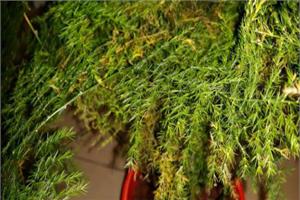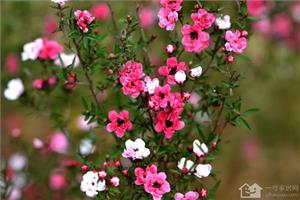Is cyclamen poisonous or not? how to solve the yellowing of cyclamen leaves?
Cyclamen is a beautiful plant, many people like breeding, but some people say that this plant hi is poisonous? Is it true? In the cultivation of cyclamen, there appeared the phenomenon of leaves turning yellow, how to solve it?

Is cyclamen poisonous?
It is true that cyclamen is toxic, but it is poisonous in the rhizome of cyclamen, which contains poisonous plant cyclamen, which can cause dizziness, vomiting, diarrhea and other symptoms if eaten by mistake. And skin contact may lead to skin allergies. Anyway, it's all right if we don't eat its roots. In general, our flowers and plants are just for viewing, and the chance of eating by mistake is relatively small. It doesn't matter as long as we take good care of the children at home and don't let them eat by mistake.
What if the cyclamen leaves turn yellow?
1. Long-term de-fertilization: there is no application of nitrogen fertilizer or change of water for a long time, and there is a lack of nitrogen and other nutrient elements in the water, resulting in thin and yellow branches and leaves. It is necessary to change into new culture water in time and gradually apply rarefied mature liquid fertilizer or compound flower fertilizer.
2. Excessive fertilization: if there is too much fertilization, the new leaves will be thickened, and the old leaves will be rugged, and the dry tips of the old leaves will fall off. You should immediately stop fertilization, increase the amount of water exchange, make the fertilizer lose, or immediately pour the pot, rinse the bulb root with water and then replant it into the basin.
3. Hot and high temperature: if you put the daffodils in a high temperature and let the strong light shine directly, it is very easy to cause the leaf tip and edge of the young leaves to scorch, or the leaves yellow to fall off. Move to a well-ventilated shady place in time.
4. Excessive shading: if the daffodils are placed in shade or in places where there is not enough light for a long time, it will cause the branches and leaves to turn yellow.
5. Soil and water bias: if there is a lack of soluble iron and other elements that can be absorbed by it in the growth environment, the leaves will gradually turn yellow. Acid soil and water should be selected when planting, and alum and fertilizer water should be often irrigated during the growth period.
6. Lack of ventilation: if too much nitrogen fertilizer is applied, the branches and leaves will grow luxuriantly, coupled with long-term unpruned, resulting in insufficient light in the inner chamber branches and leaves, which is easy to cause leaves to yellowing and falling off. Reasonable fertilization should be applied and pruning should be strengthened to make it ventilated and transparent.
7, air drying: when the indoor air is too dry, daffodils often appear leaf tip drying or leaf edge scorching and other phenomena. Attention should be paid to spraying water, covering plastic film cover and other methods to increase air humidity.
The above is the introduction of this article, I believe you have a simple understanding after reading it, if necessary, you can continue to pay attention to the No. 1 home network for more information.
- Prev

Reasons for yellowing of asparagus leaves how to deal with the yellowing of asparagus leaves
Reasons for yellowing of asparagus leaves how to deal with the yellowing of asparagus leaves
- Next

The reason for the yellowing of pine red plum leaves how to deal with the yellowing of pine red plum leaves
The reason for the yellowing of pine red plum leaves how to deal with the yellowing of pine red plum leaves
Related
- Wuhan Hospital Iron Tree Blooming Result Was Instantly Frightened by the Gardener Master
- Which variety of camellia is the most fragrant and best? Which one do you like best?
- What is the small blue coat, the breeding methods and matters needing attention of the succulent plant
- Dormancy time and maintenance management of succulent plants during dormancy
- Minas succulent how to raise, Minas succulent plant pictures
- What are the varieties of winter succulent plants
- How to raise succulent plants in twelve rolls? let's take a look at some experience of breeding twelve rolls.
- Attention should be paid to water control for succulent plants during dormant period (winter and summer)
- Watering experience of twelve rolls of succulent plants
- Techniques for fertilizing succulent plants. An article will let you know how to fertilize succulent plants.

